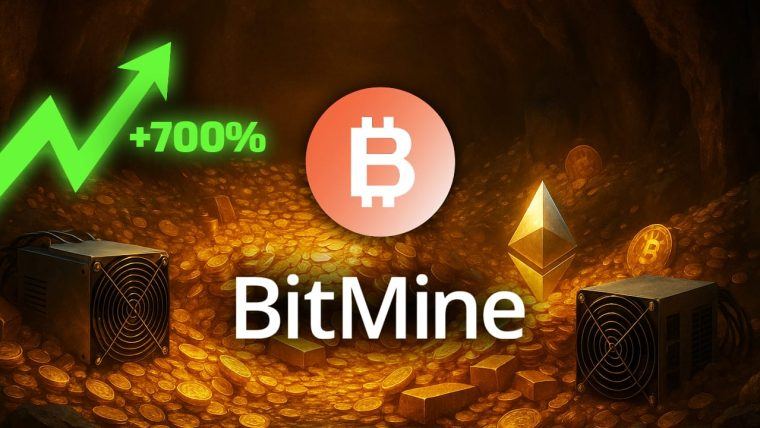NVIDIA市值突破5万亿:揭秘其与加密货币的短暂联姻历程
英伟达市值达到5万亿美元,这一成就证实了其精准把握并引领从游戏、加密货币挖矿到人工智能三次科技浪潮的能力,始终以算力为核心,服务于每个时代的“淘金热潮”。
Nvidia's market capitalization reaching $5 trillion confirms its ability to accurately capture and steer through three major technological waves—gaming, cryptocurrency mining, and AI—always focusing on computing power as the core driver for each era's "gold rush."
 Analysis
Analysis
This article is reproduced with permission from吴说Real by Wu Shuo Blockchain. All rights reserved by the original author.
As of late October 2025, Nvidia's stock price hit a new all-time high, with its market cap breaking through the $5 trillion mark, making it the first company in the world to cross this threshold. Since the launch of ChatGPT in late 2022, Nvidia’s share price has soared more than 12-fold, fueling not only a new AI revolution that pushes the S&P 500 to new heights but also sparking discussions about potential tech valuation bubbles. Today, Nvidia's market cap even surpasses the total size of the entire cryptocurrency market. If ranked by global GDP, Nvidia's valuation ranks only behind the US and China. Interestingly, this AI superstar also experienced a brief "honeymoon" with the crypto industry. This article revisits Nvidia’s tumultuous relationship with the crypto mining sector, and why it chose to pivot back to its core AI business.
Crypto Bull Market Surge: Gaming Graphics Cards Turned “Money Printers”
Tracing Nvidia’s development history is also a legendary story of technological evolution. Founded in 1993, Nvidia pioneered the GPU (Graphics Processing Unit), riding the wave of the late 1990s PC gaming boom. Their GeForce line of graphics cards quickly captured the market, establishing Nvidia as the dominant graphics card manufacturer. However, as the gaming market matured and growth slowed, Nvidia faced inventory backlog challenges. Fortunately, opportunity favored the prepared—a major turning point was the crypto boom.
In 2017, cryptocurrencies like Bitcoin and Ethereum skyrocketed, igniting a mining frenzy. GPUs are highly suitable for parallel computing required for mining, leading miners worldwide to scramble for graphics cards. Suddenly, GPUs became "money printers," in short supply and commanding soaring prices. Nvidia emerged as one of the biggest beneficiaries of this crypto bull market, earning massive profits from GPU sales.

From the second half of 2020, after two years of downturn, the crypto market revived. Bitcoin’s price surged from under $15,000 mid-year to over $60,000 in early 2021, while Ethereum jumped from hundreds of dollars to over $2,000. This new wave of crypto prices rekindled the demand for high-performance graphics cards. Miners flooded the market with the latest GeForce RTX 30 series cards, causing shortages and skyrocketing prices. While the RTX 30 series initially delighted gamers with high performance and cost-effectiveness, its profitability for Ethereum mining led to supply issues—suggested retail price of 2,499 RMB for RTX 3060 being flipped for 5,499 RMB, and flagship RTX 3090 reaching nearly 20,000 RMB on the gray market.

The persistent GPU shortages pitted gamers against miners. Nvidia responded with a "dual-track" approach—initially reducing Ethereum hash rate in GeForce (starting with RTX 3060) models, but gamers soon discovered workarounds, such as installing "dummy HDMI" adapters that tricked the system into thinking only one GPU was active. Miners exploited this by enabling full performance across multiple cards in mining rigs—bypassing limitations designed to curb excessive mining and causing further supply strains.

To address this, Nvidia launched the Cryptocurrency Mining Processor (CMP) series, aimed explicitly at miners. The company's official stance was clear: “GeForce is designed for gamers, CMP is designed for crypto mining.” CMP cards stripped out display outputs, featured open slots for better airflow, and lowered peak voltage and clock speeds for efficiency—yet lacked display connections and had shorter warranties, making them less attractive for miners to resell or exit. Meanwhile, GeForce cards could be repurposed for gaming or resold, maintaining better residual value and liquidity. Ultimately, the CMP line was limited in impact and gradually faded from prominence.
According to Nvidia’s financial reports, in the first quarter of 2021, about a quarter of GPU shipments were sold for mining purposes, with CMP sales reaching $155 million. Crypto-related sales contributed significantly—driving Nvidia’s total revenue to $26.9 billion in 2021, a 61% increase year-over-year, and pushing its market cap over $800 billion.
However, this boom was short-lived. In May 2021, China’s State Council Financial Committee announced crackdowns on Bitcoin mining and trading. Subsequently, regions like Xinjiang, Qinghai, and Sichuan shut down many mining operations, abruptly cooling the industry. As Bitcoin’s hash rate and prices declined, miners faced forced migration or equipment liquidation. By September 24th, regulators mandated the phased “orderly decommissioning” of crypto activities nationwide, tightening restrictions further.
For miners and traders in places like Huaqiangbei, the boom-bust cycle became routine. Those who endured the 2018 “mining crash” kept some mining rigs operational, waiting for the next cycle. The 2020–2021 bull market eventually rewarded persistent miners with gains, proving resilience.
In September 2022, Ethereum completed its "Merge", transitioning from proof-of-work (PoW) to proof-of-stake (PoS), eliminating the need for GPU mining. This marked the end of the GPU mining era for Ethereum, and the global GPU market quickly cooled down, impacting Nvidia’s earnings. In Q3 2022, Nvidia’s revenue fell by 17% year-over-year to $5.93 billion, with net profit plunging 72% to $680 million. Its stock price dropped close to $165, roughly halving from its previous highs—turning the crypto-driven gains into an economic burden.
Cutting Ties: Nvidia’s Breakup with the Mining Industry
Faced with industry volatility and consumer complaints, Nvidia gradually recognized the need to balance crypto mining influences and began distancing itself. The bubble risks from soaring crypto prices prompted scrutiny over financial disclosures. The SEC investigated Nvidia for failing to fully disclose contributions of crypto mining to gaming GPU revenue during fiscal 2018. Nvidia settled in May 2022, paying a $5.5 million fine. This event prompted the company to reassess its relationship with the crypto sector. Despite the profits from mining, the sector’s volatility and regulatory risks could harm Nvidia’s reputation and performance.
Post-Ethereum's switch to PoS, demand for GPU mining collapsed, and Nvidia’s gaming GPU supply normalized quickly. CEO Jensen Huang repeatedly emphasized that future growth would derive mainly from AI, data centers, and autonomous driving, rather than speculative crypto-related businesses. After experiencing the highs and lows of the "mining card" craze, Nvidia decisively severed ties with the high-volatility sector, channeling more resources into broader, socially valuable AI applications. Nvidia’s latest AI startup program, Inception, explicitly excludes “cryptocurrency-related companies,” signaling a clear intent to differentiate from its crypto past.

So, after fully embracing AI, do Nvidia’s chip operations and the crypto industry still intersect? On the surface, with Ethereum abandoning PoW, the link between GPUs and crypto mining has greatly diminished—Bitcoin and other main coins now primarily use ASIC miners, and GPUs are no longer the miner’s favorite. Nonetheless, the two sectors are not entirely disconnected; new integration points are emerging in various forms.
Some former crypto miners are shifting focus to AI compute services, becoming Nvidia’s new clients. Moreover, traditional Bitcoin mining companies are exploring how to utilize excess power and space resources for AI training tasks. Many large miners are already replacing some of their mining hardware with GPUs suited for AI model training. They view AI training as a more stable and profitable alternative compared to the turbulent crypto mining market.
The Biggest Winners in the AI Gold Rush—Nvidia as the “Seller of Shovels”
In November 2022, OpenAI launched ChatGPT, igniting a global frenzy around AI large models. For Nvidia, this was a historic gift—a once-in-a-century opportunity. The world suddenly realized that powering these "power-hungry" AI monsters fundamentally depended on Nvidia’s GPUs.
Following ChatGPT’s success, tech giants and startups flooded into the “big model” race, dramatically escalating demand for compute power. Nvidia keenly understood that regardless of technological shifts, compute power remains the foundational currency of the digital universe.
Currently, Nvidia commands over 90% of the high-end AI training chip market. The A100, H100, and new Blackwell/H200 GPUs have become industry standards for AI acceleration. Due to demand far exceeding supply, Nvidia holds extraordinary pricing power and profit margins in this segment. High Goldman Sachs estimates project that from 2025 to 2027, the combined capital expenditure of giants like Amazon, Meta, Google, Microsoft, and Oracle for AI infrastructure will approach $1.4 trillion—nearly tripling the investments of the previous three years, further solidifying Nvidia’s high market valuation.
However, the AI sector once faced a “cost reduction” revolution sparked by open-source projects like DeepSeek. Claiming to train models comparable to GPT-4 at only about $5.6 million, DeepSeek achieved remarkable breakthroughs. This led to industry debates: “Will efficiency gains replace demand for GPUs?” Some feared the demand for AI compute power might decline—pressuring Nvidia stock, which temporarily tumbled about 17%, wiping out nearly $590 billion in market value in a single day.
Yet, months later, reality proved those fears unfounded. DeepSeek’s low-cost models did not reduce overall compute needs—instead, they triggered a new surge of AI applications and demand for compute resources. The underlying idea apparently promotes “compute equity”—allowing broader access through algorithmic innovations and model distillation. Although models are more efficient, they diffuse AI applications widely, leading to exponential growth in demand for compute power. As more companies deploy AI—especially inference workloads—this demand accelerates, exemplifying the “Jevons Paradox”: technological improvements reduce costs but inadvertently increase overall resource consumption. DeepSeek made AI more accessible, fueling a new wave of expansion.
Every new AI model typically triggers a fresh wave of GPU orders. The more AI innovations, the stronger Nvidia becomes—this cycle was confirmed again during the DeepSeek incident. Nvidia’s Q2 2025 earnings report showed data center revenue well exceeding expectations. The success of DeepSeek revealed that efficiency improvements did not diminish demand—instead, they widened AI’s reach, making compute demands even greater. Surprisingly, DeepSeek became a new fuel in Nvidia’s compute empire rather than a threat.
As AI pioneer Andrew Ng says, “AI is the new electricity.” In this era of AI-as-electricity, Nvidia as a compute provider plays the role of the “power company”—delivering continuous energy through massive data centers and GPU clusters to transform industries. This density of demand is the core reason Nvidia’s valuation soared from $1 trillion to $5 trillion in just two years—global AI compute demand has experienced a quantum leap, with tech giants worldwide investing heavily in GPU procurement like in a massive arms race.
With a market cap of $5 trillion, Nvidia’s influence and scale surpass many national economic powers. The company is no longer just a “graphics card” maker for gaming but a fundamental fuel for the AI era—an acknowledged “shovel seller” in this gold rush. As its size grows, Nvidia employees’ wealth stories have spread—many holding stock worth more than their annual salary. Nvidia’s continuous strategic narrative-shifting has powered its transformation: from gaming graphics to crypto-driven growth, and now to AI — each phase pushing Nvidia to new heights.
Related article: Opinion: AI Will Forever Transform Smart Contract Auditing
-

-

-

-

-

-

-

-

-

-

-

-











